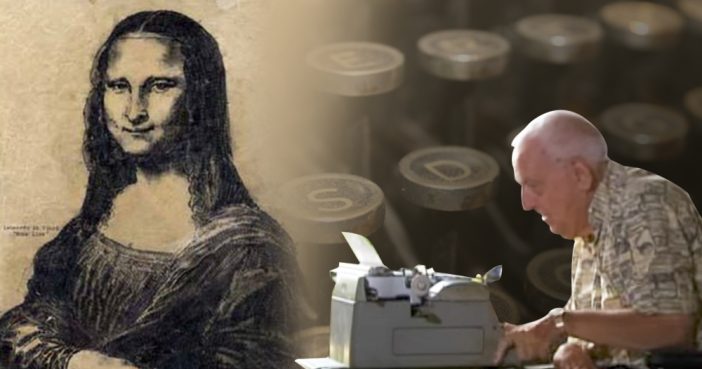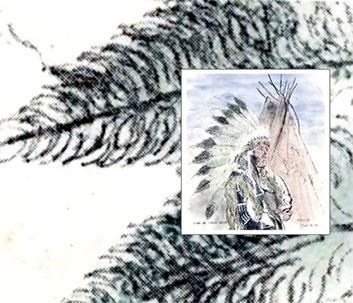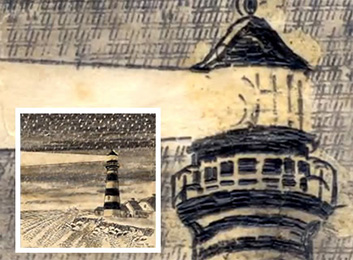

As he typed, he would secure the shift key in a locked position to make sure that he didn’t inadvertently type numbers. He used his left hand to steady his right. Different symbols created the look of varied textures, and depending on the look Paul was attempting to achieve, he would adjust the spacing to type the symbols in short proximity, or far. And, he adjusted the roller to perfect spaces between lines.
As technology advanced, his art evolved. The invention of color typewriter ribbons gave Paul the flexibility to layer in color. He would soon press his thumb on the ribbon to create shade. By using keystrokes, repetition, and an eraser, his pictures took on less of a pen-and-ink look and more of a pastel and charcoal appearance. He would preplan his approach and develop a scaling system to reproduce photographs.
Depending on the nature of a picture – how large it was, and how complex – it could take anywhere from two weeks to three months to complete one piece. He worked, on average, a couple hours every day on his art. After all of that work, one wouldn’t blame Paul if he sought to sell his work, but by all accounts, he would give away his pieces. As his distinctive art form gained intrigue from others, the number of orders for artwork increased.

He would sign his work by typing his name, usually along the bottom right corner of the page.
There’s also little evidence that Paul’s work was widely published outside of a handful of online references and book mentions. For him, creating art was a leisurely pursuit and a form of expression. He didn’t believe he had talent, as much as he believed his talent was a special gift not produced by effort. To the art world, he set a high bar for typewriter artists that many have tried to match, but few are able to replicate.
The impact he made is NEXT
